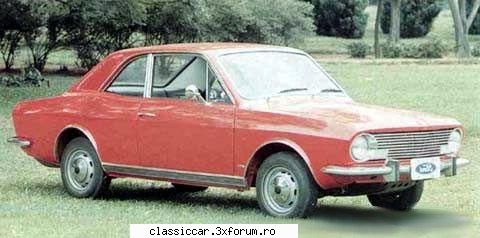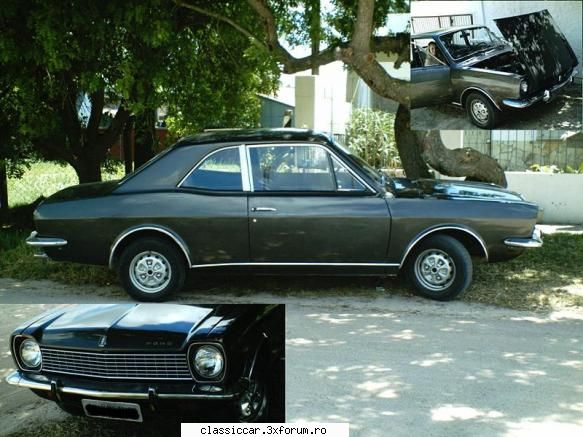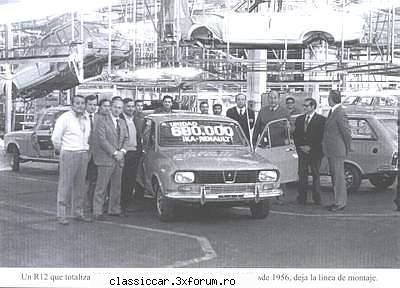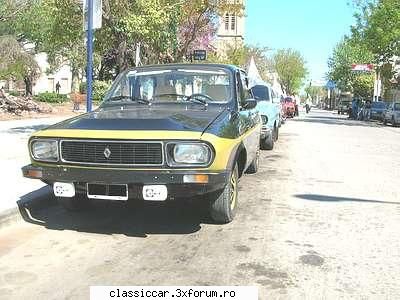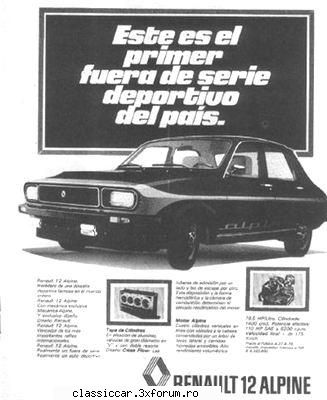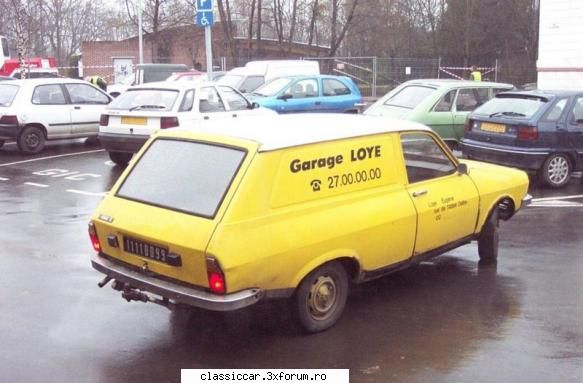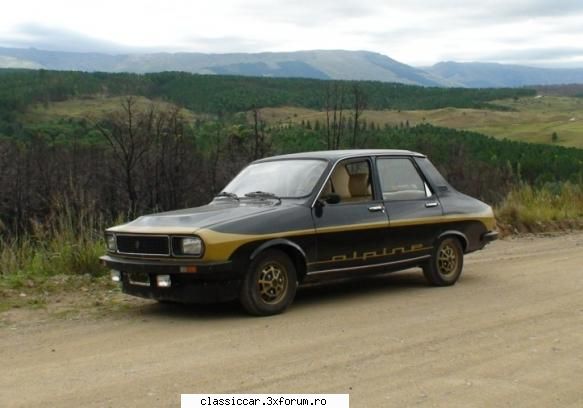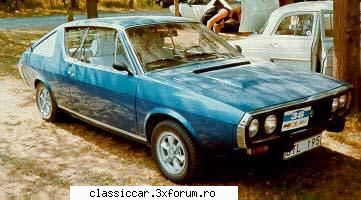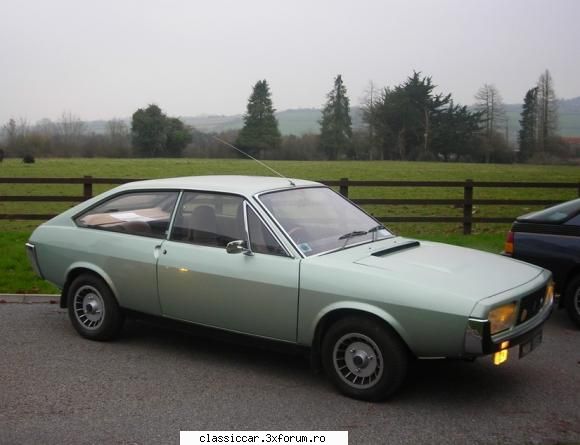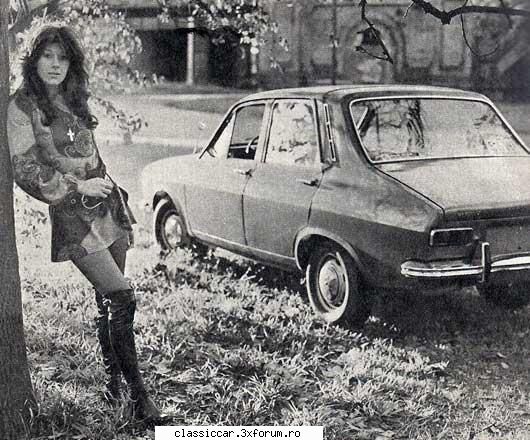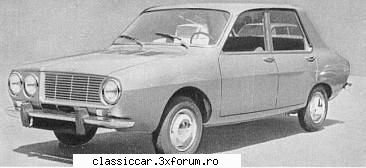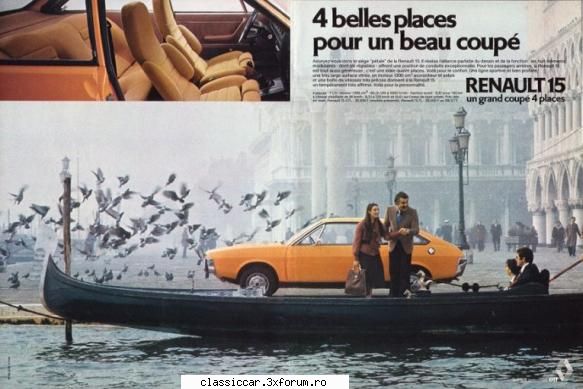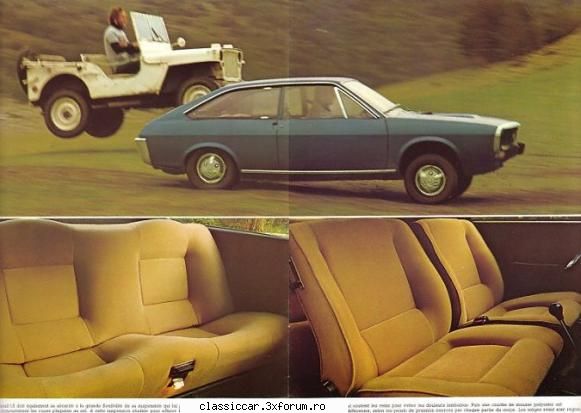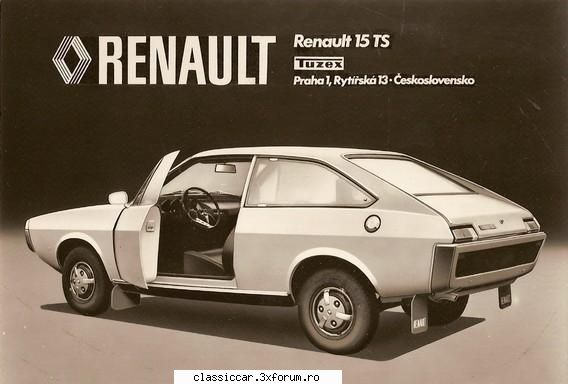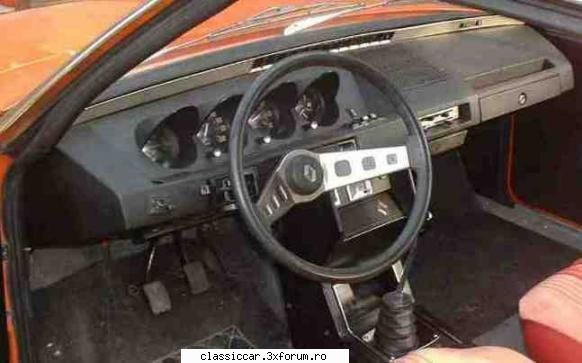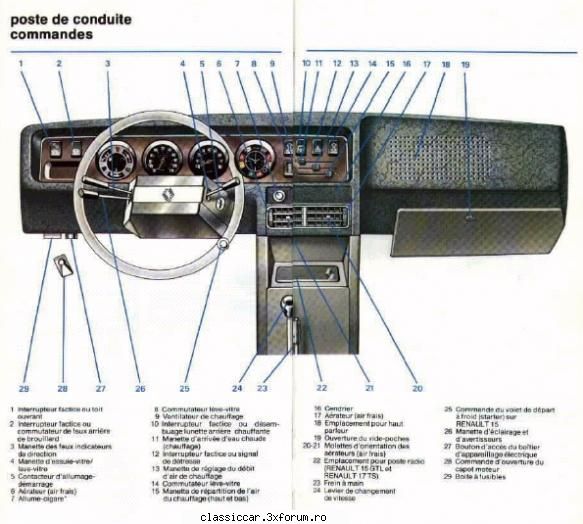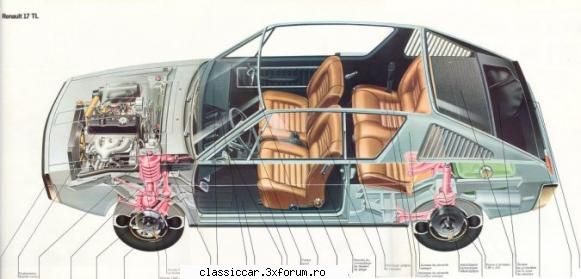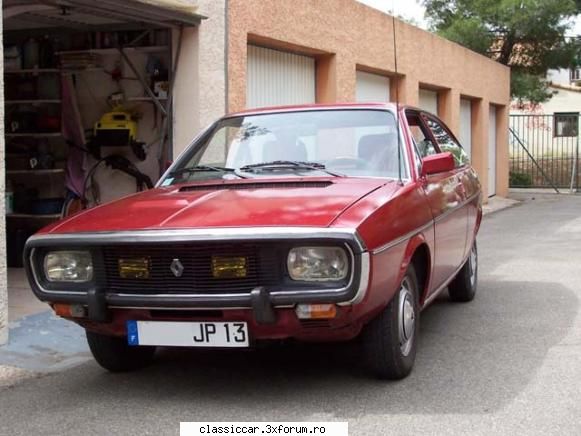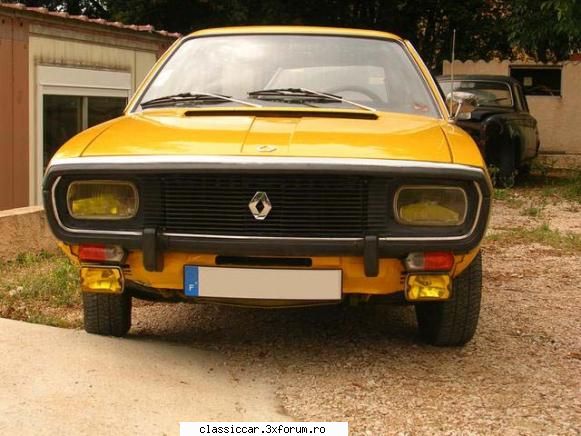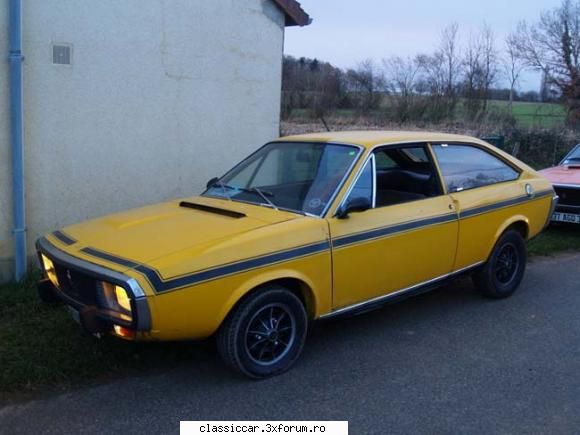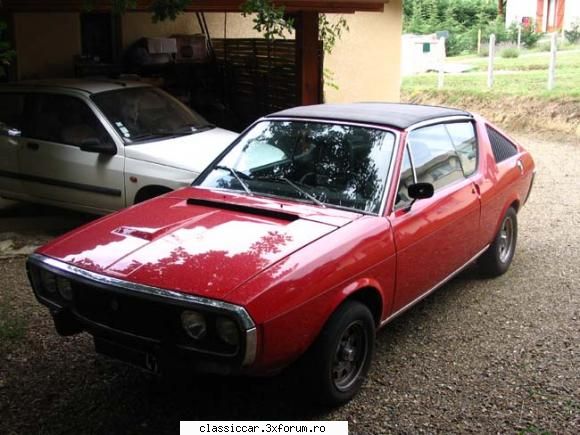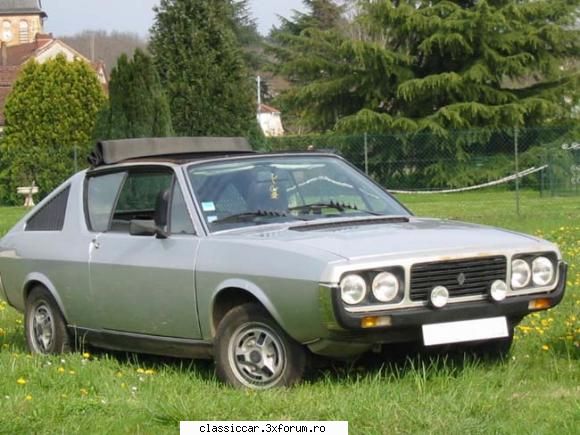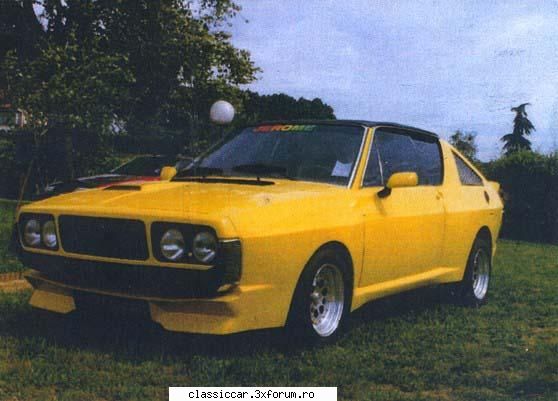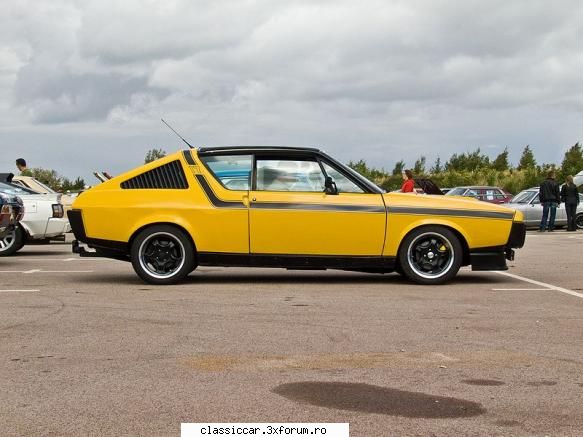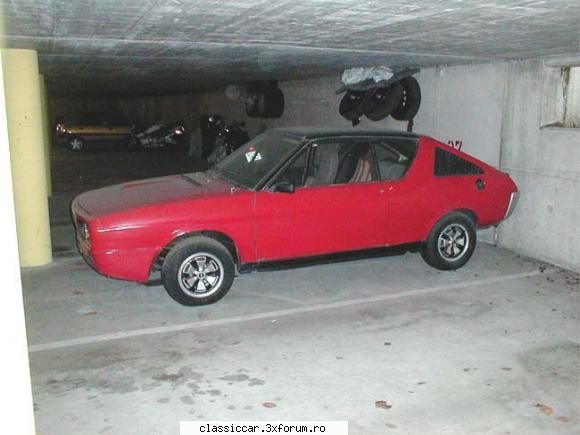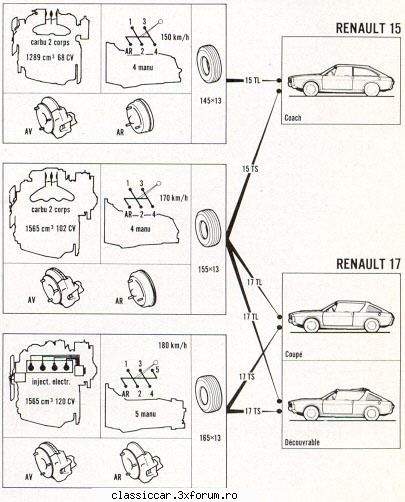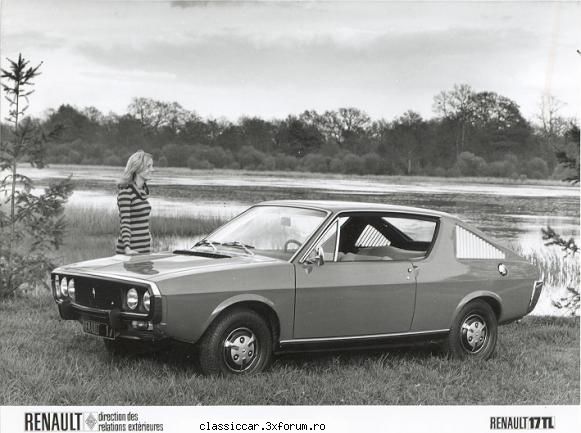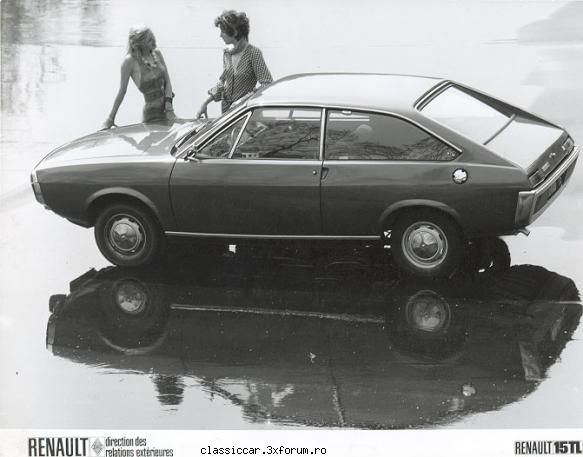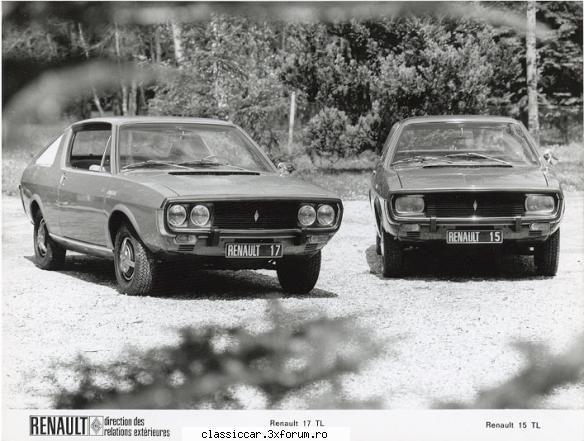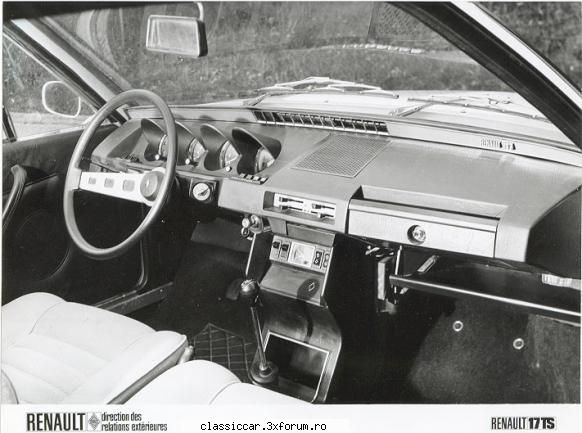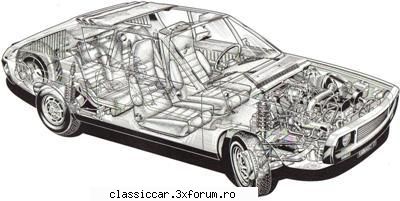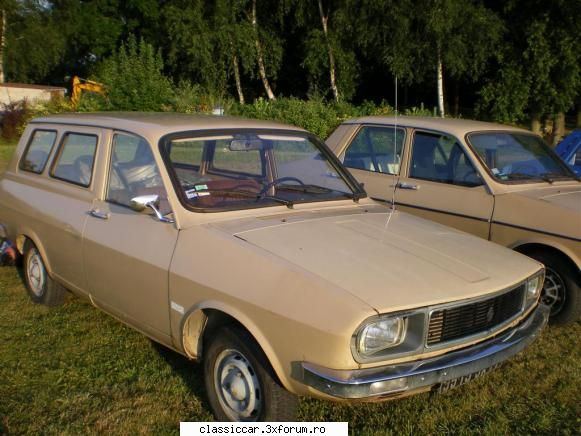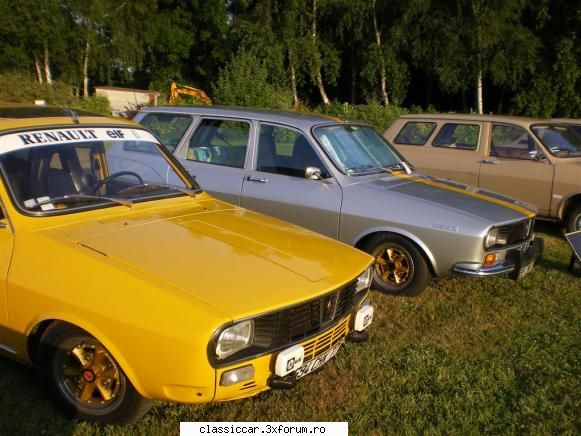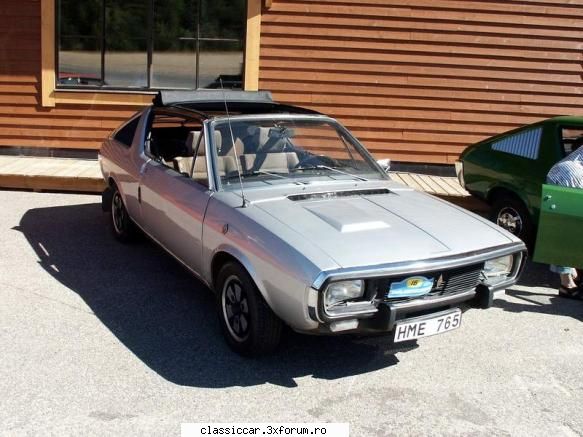Misu de Cluj
Admin
 Din: Cluj-Napoca
Inregistrat: acum 17 ani
Postari: 48329
|
|
Renault 12
From Wikipedia, the free encyclopedia
Renault 12
Manufacturer Renault
Also called Dacia 1300
Dacia 1310
Dacia 1410
Ford Corcel
Ford Del Rey
Production 1969—1980
Assembly:
Billancourt, France
Envigado, Colombia
Mioveni, Romania
Bursa, Turkey
Sao Bernardo do Campo, Brazil
Heidelberg, Australia
Santa Isabel, Argentina
Mariara, Venezuela
Ciudad Sahagun, Mexico
Predecessor Renault 8 / Renault 10
Successor Renault 9
Class Small family car
Body style(s) 4-door saloon
5-door estate
3-door panel van
Layout FF layout
Wheelbase 2440 mm (96.1 in)
Length 4345 mm (171.1 in) (saloon)
4410 mm (173.6 in) (estate)
Width 1616 mm (63.6 in)
Height 1435 mm (56.5 in) (empty)
Fuel capacity 50 L (13 US gal; 11 imp gal)
The Renault 12 is a family car produced by French automaker Renault between 1969 and 1980. Available as a saloon (Berline) and estate (Break), it was also produced under licence in many countries across the globe into the early 21st century.
In its first few years the 12 received praise from the European press for its spacious, comfortable interior, its styling, its performance and its low fuel consumption. However it fared worse in the North American press: in a test of the 1974 model, Road & Track was critical of the engine's "obtrusive" noise, and called the heavy, non-power steering "a serious design flaw". They also gave it "very poor marks" for the ventilation system.
Renault 12 production and sales ended in western Europe in 1980, but the model continued to be produced and sold by Renault affiliates elsewhere. The last R12 was produced in 1999 in Turkey, whilst Romanian automaker Dacia continued producing the R12-based 1300 sedan and estate until 2004 and the R12-based Gamma pick-up until July 2005.
Overall, the Renault 12 was a successful car, selling 2.5 million units.[1]
The project
In 1965, Renault began to study a new model to bridge the gap between the Renault 8 and the Renault 16. The demands for Project 117 were:
"The car had to be economical, not very sophisticated. It had to have a roomy interior, and a large boot, and a small engine will suffice. The car had to be easy to produce, so it could be made all over the world. It had to be reliable for the export markets, and comfortable enough for France. It should be usable as a base for multiple variations."
The Renault 12's design dates back to the genesis of the Renault 16; indeed, some initial R16 concept designs resemble the R12 more than the ultimate design of the R16. However, the R12 was technically quite different from either the R16 or the smaller Renault 4. Like all new Renaults at the time the car had front wheel drive, but the R12 had a very different layout. The engine was placed longitudinally ahead of the front wheels, while it was behind the wheels on the R4 and R16; the engine itself was the iron cast Cléon unit used since 1962 in the Renault 8/10 (the engine's size was increased to 1289 cc for use in the 12). The placement of the engine allowed the R12 to have a very simple design of the gear-selector that was placed on the floor of the car, and not on the dashboard as with the R4 or on the steering column as with the R16. The handle to operate the handbrake was placed under the dashboard. The R12's suspension differed from the R4 and R16 also, using a rigid (but light) rear axle as opposed to four-wheel independent suspension.
Versions
Estate version post 1975 facelift
"Service" (van) versionAt the time of its launch in October 1969 at the Paris Motor Show, the Renault 12 was only available as a four-door saloon, in L and TL specifications, both of which were powered by a 1289 cc engine rated at 40 kW (54 hp). The more expensive TL featured two separate reclining front seats instead of one front bench seat, arm rests on the doors, lights in the boot and glovebox, a heated rear window, and extra warning lights.
However in 1970 two new variants were introduced. First, the estate was launched with the same trim levels and engines as in the saloon. Also, the high performance Renault 12 Gordini model was introduced equipped with the all-aluminium 1565 cc block from the R16 TS fitted with two double-barrel Weber carburettors producing 125 bhp (93 kW), a reinforced crankshaft, a five speed gearbox, ventilated disc brakes on the front wheels and normal disc brakes on the rear wheels, and tuned suspension. The Gordini was able to reach 185 km/h (115 mph) and was sold with paint schemes comprising a solid pastel colour (there were several to choose from) with double white stripes added on, the most famous combination being French Blue with stripes.
In October 1972, the more upmarket R12 TS was introduced. It used same 1289 cc engine as in other R12s, but was equipped with a single, double barrel Weber carburettor, which increased power considerably and raised top speed to 150 km/h (93 mph). Aesthetically, the car was distinguishable from other R12s by its special Gordini-style wheels, a chrome strip along the side of the car, and two extra headlights. The TS also featured integrated headrests, a rev-counter and a cooling-fluid temperature gauge.
In October 1973, the R12 TR appeared. This model slotted between the TL and TS, and had automatic transmission as standard.
The whole range was facelifted in 1975 with a new grill, rear lamps and dashboard.
Romania
1975 Dacia 1300Main article: Dacia 1300
Dacia acquired the tooling and basic designs of the Renault 12 and manufactured it in various body styles in Romania, as the Dacia 1300, between 1969 and 1979.Also,the successor of this car named Dacia 1310 was based on Renault 12.The production of the Renault 12-based 1310 started in 1979 and stopped in 2004.
Turkey
A Renault 12-based car was made in Turkey by Renault-Oyak between early 1970s and late 1990s. The earlier models were similar to the original R12, then the car underwent a facelift in the 1980s and was marketed under the name Toros until it was discontinued.
Australia
The Renault 12 won Australia's Wheels magazine's Car of the Year award in 1970.
It was built at Renault Australia's assembly plant in the Melbourne suburb of Heidelberg from CKD kits. Various components such as seats were sourced locally.
The Australian range generally followed the UK models, including the 1975 facelift. However in 1976, the Renault 12 1.4 was introduced as the standard model, replacing the 1289 cc engine with a larger capacity 1397 cc unit of the same basic design.
In 1978 the 12 was re-launched as the Renault Virage. This was identical to the 12, but incorporated twin round headlamps.
Production in Australia ended in 1980.
North America
The American-market Renault 12 came in three trim lines: 12, 12L, and 12TL, ranging in price from an inexpensive US$ 2975 to US$ 3448. It was a slightly larger car than most European imports, and the longitudinal front wheel drive layout contrasted with most. The engine, an R16 all-aluminum 1.6 L (1647 cc) unit which produced 65 hp (49 kW), was specific to the U.S. market. It was upgraded in 1975 with hemispherical heads and a higher compression ratio for 72 hp (54 kW).
South America
In Brazil, a version of the 12 was sold as the Ford Corcel and later the Ford Del Rey, when Ford do Brasil acquired the factory and rights to build the car from Willys-Overland, which had jointly developed the Brazilian version with Renault in the late 1960s. The Corcel was in fact launched in Brazil before the Renault 12 was launched in France.
The Renault 12 was very popular in Argentina and Colombia, during the 70's and 80's.
In Colombia, this car was made at the plant of Renault SOFASA in Medellín city between 1973 and 1981.
In Argentina, the local versions being made at the "Santa Isabel" plant of Renault Argentina in the province of Córdoba. Production ran from November 1971 to the same month of 1994 (1973 to 1992 for the Break); totaling around 450.000 units. Drive trains began as 1300 cc., switching effectively to 1400 cc. for all versions in 1977 (it was introduced for the break in 1976), with a last increase in bore and stroke in 1992 reaching 1600 cc. Gearboxes were 4 speed manuals until 1988, and 5 speed boxes thereafter.
It is of interest to point out that during the 70's the R12 had a slightly higher status in this country than other places, given the fact that the Argentine Renault cars lineup was quite narrow at the time(R4, R6 and Renault Torino). This caused the factory to add extras such as A/C and quality upholstery to close the gap between this car and the Torino until the arrival of the R18 in 1982. For this same reason, virtually all of the estate models (Break) were built with the TS's mechanical and comfort features.
R12 Alpine
Probably the most remarkable model, from a worldwide perspective, was the R12 Alpine. This was a sports version designed to improve the marque's image at local rallying. The main features were the 1400 cc. R5 Alpine engine (built locally with imported parts), bulbous fiberglass bonnet, rally spec. suspension, and custom paint schemes. The engine turned out 110 hp (82 kW) SAE, giving the Alpine a top speed of around 175 km/h (109 mph). The new suspension was also as good as the power plant, being rated at the time as "outstanding" and "Goes like on rails" (CORSA Magazine). Renault was not interested in volume production, though, and only 493 units were made between 1977 and 1980 (sold from 1978 onwards). Plus, the Alpine's hand-building process and imported parts made it cost about 40% more than the basic TL version. R12 Alpine parts were sometimes used by rallying R12 TS's, as they gave the car quite desirable characteristics but, like the R12 Alpine itself, these parts were rare.
_______________________________________
NU TOATE MASINILE VECHI SUNT RABLE! 
UN POPOR CARE ISI INGROAPA TRECUTUL, NU VA AVEA VIITOR! 
SUNT MANDRU DE RABLELE MELE !!! 
|
|




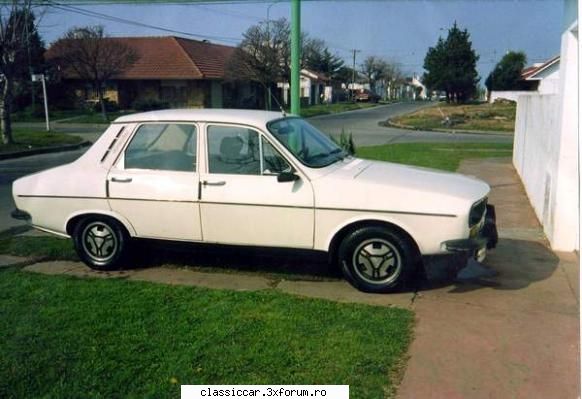
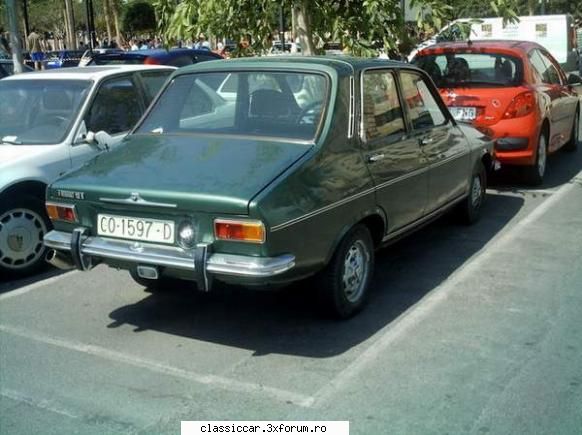


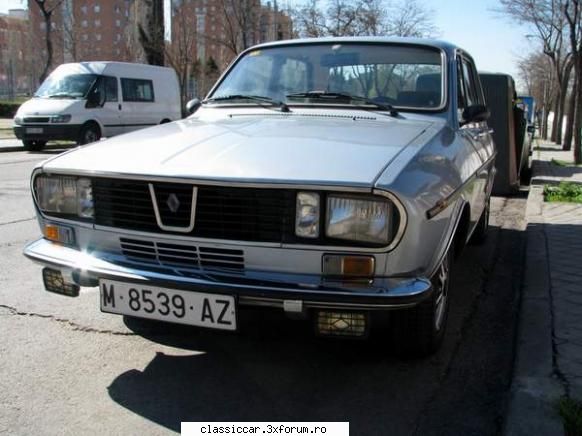
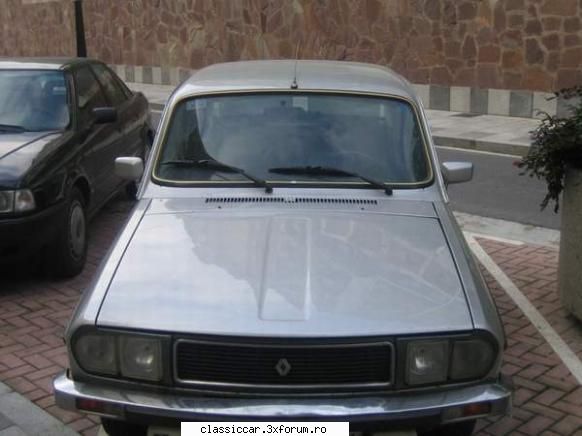
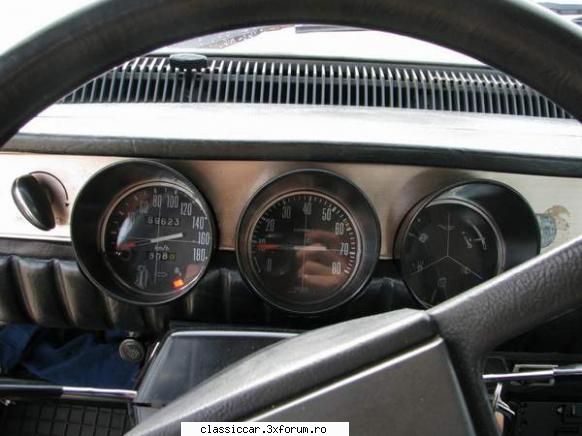
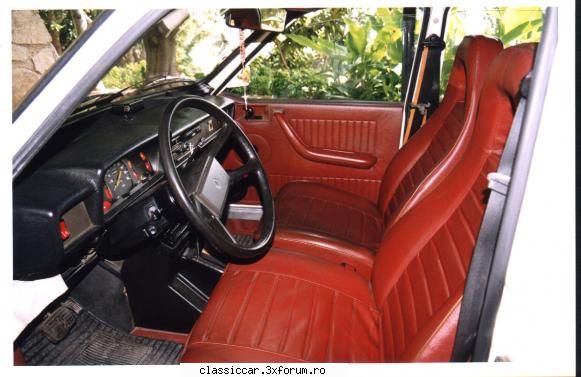

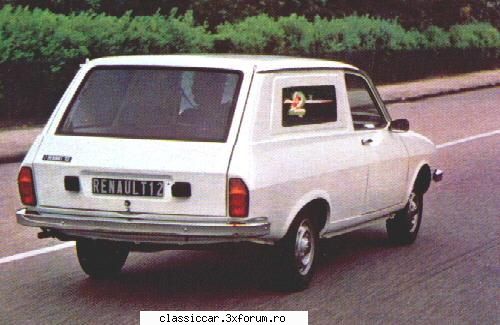
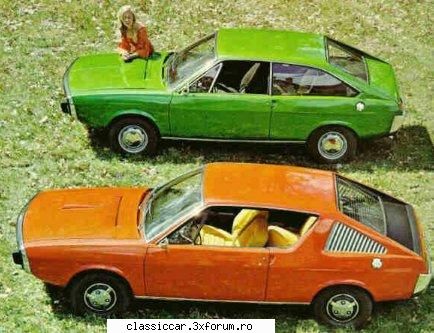
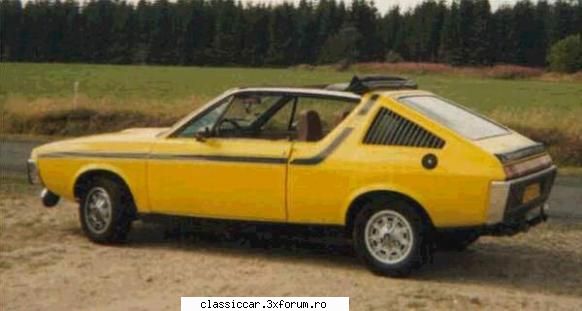
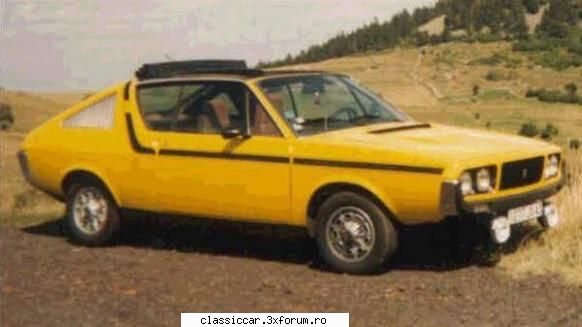
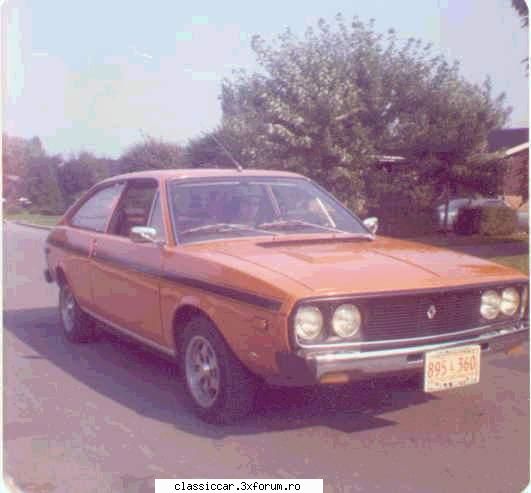
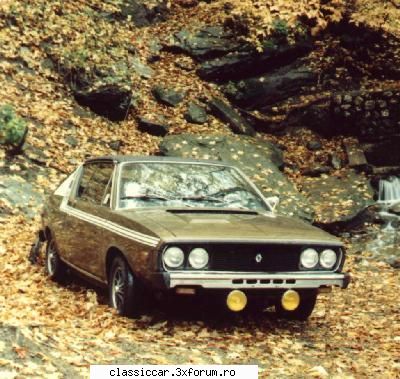
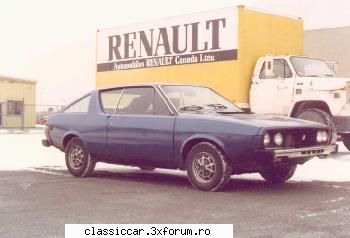
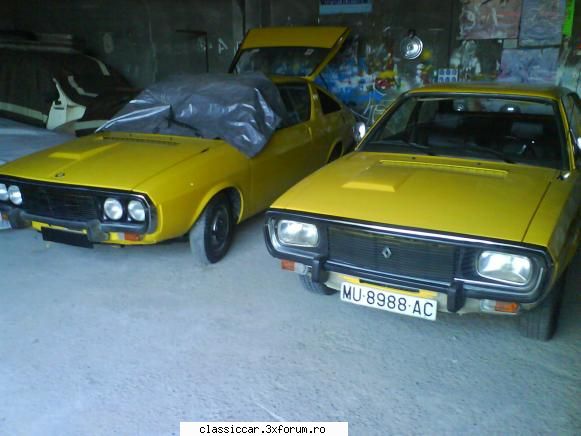
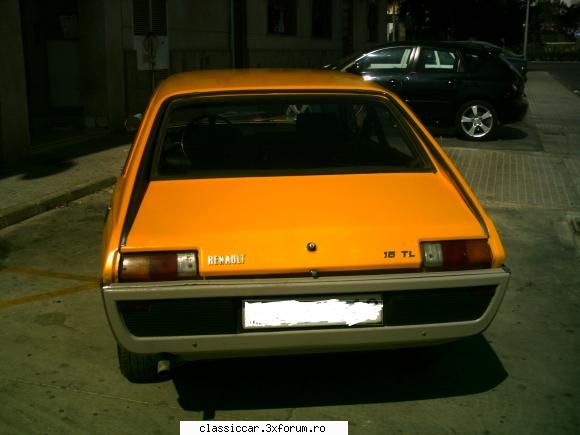
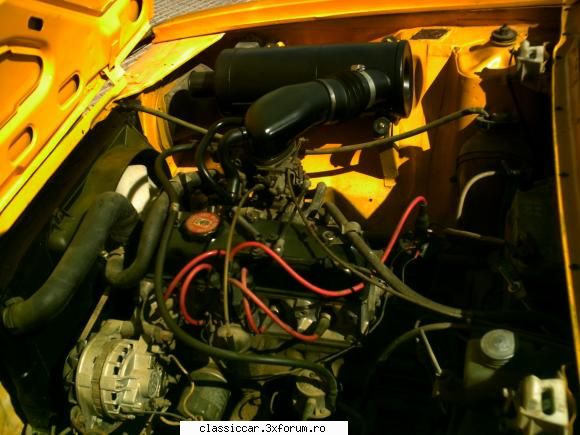

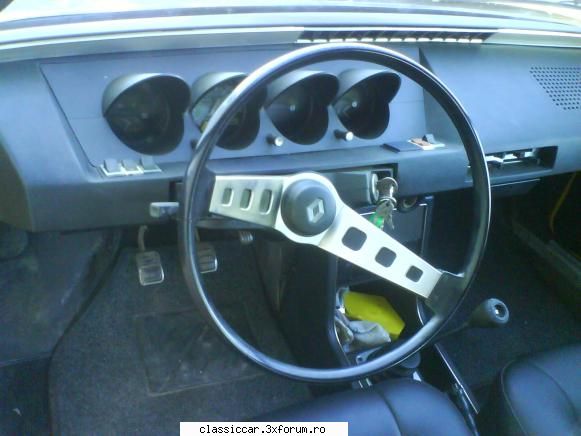
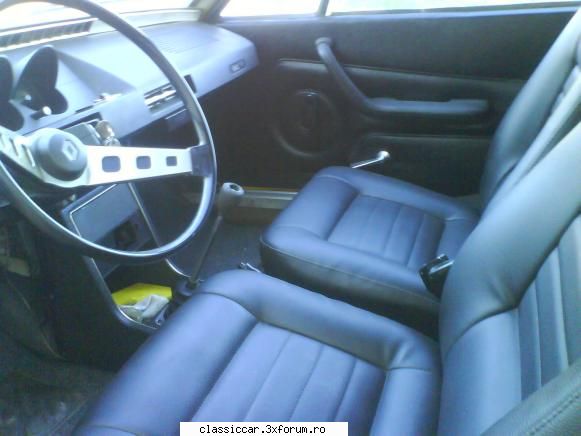
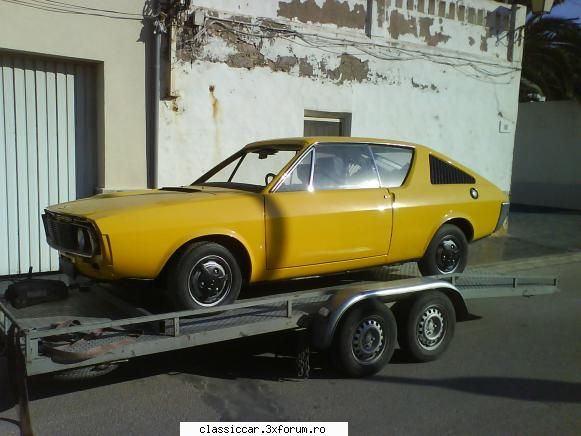








 and a GT version were made. With each passing year, many styling changes were made, borrowing several details from the Ford Maverick, and becoming more and more like a Pony car.
and a GT version were made. With each passing year, many styling changes were made, borrowing several details from the Ford Maverick, and becoming more and more like a Pony car.